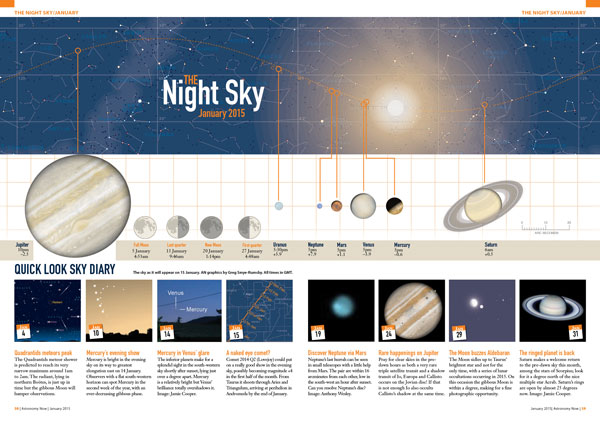
Venus is now a brilliant celestial beacon at dusk, visible low in the south-western sky. If you are lucky enough to have an unobstructed horizon in this direction then the exciting news is that Mercury is a mere two degrees below it, the two being a splendid sight. If you attempt to view them in binoculars or a small telescope then make sure the Sun has set before doing so. Higher up and further to the east the red planet Mars can be spotted too, especially as the evening twilight fades away.
Follow them over the next couple of weeks or so and watch Mercury pull clearer of the horizon and home in on Venus, the two being as close as 0.6 degrees on 11th January. The innermost planet reaches greatest elongation from the Sun (19 degrees east) on 14th January. It will be well worth seeking out a decent observing site to see this conjunction and perhaps snapping a few photographs.
Inside the magazine
Find out more about what’s up in the night sky in the January edition of Astronomy Now. Never miss an issue by subscribing to the UK’s biggest astronomy magazine. Also available for iPad/iPhone and Android devices.




